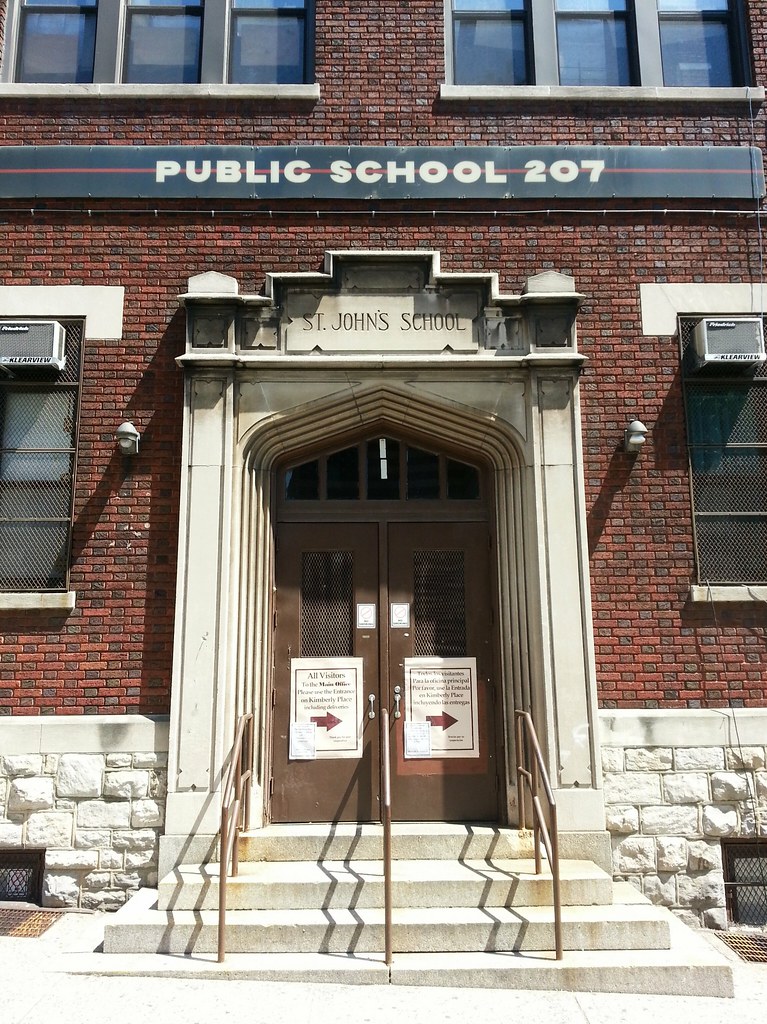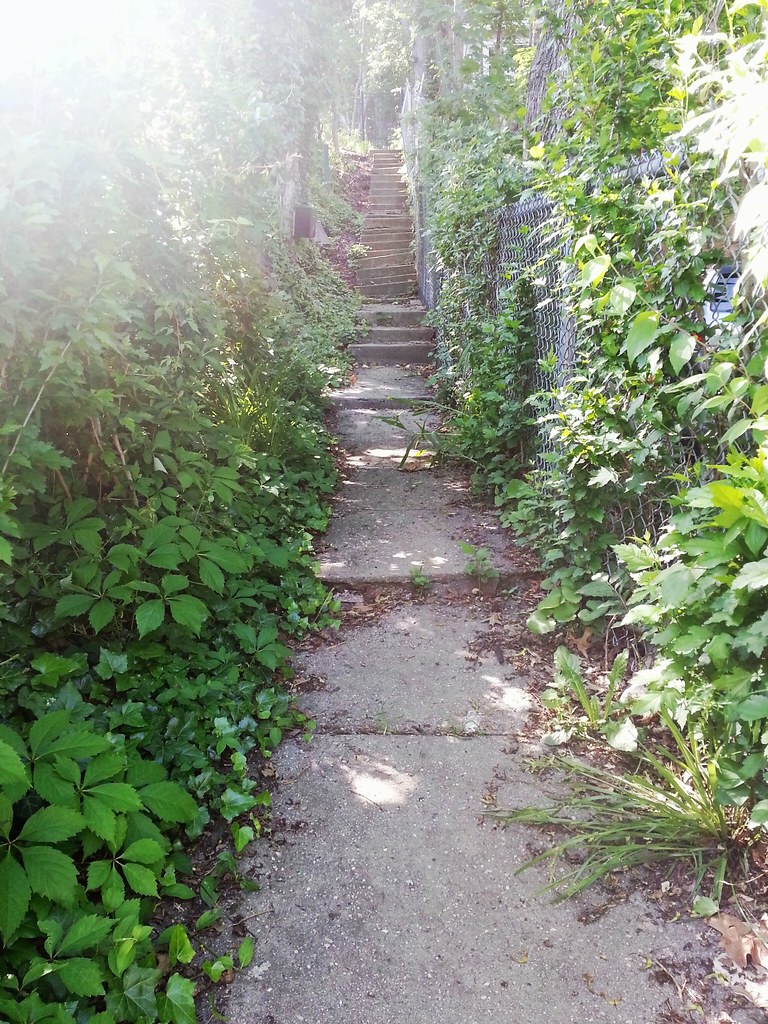

Another '76 Checker Marathon, spotted by someone else here.
This isn't a licensed cab, FYI. As far as I can tell, it's just someone's personal vehicle.

That's a pouch of Drum halfzware shag at the foot of the chair.
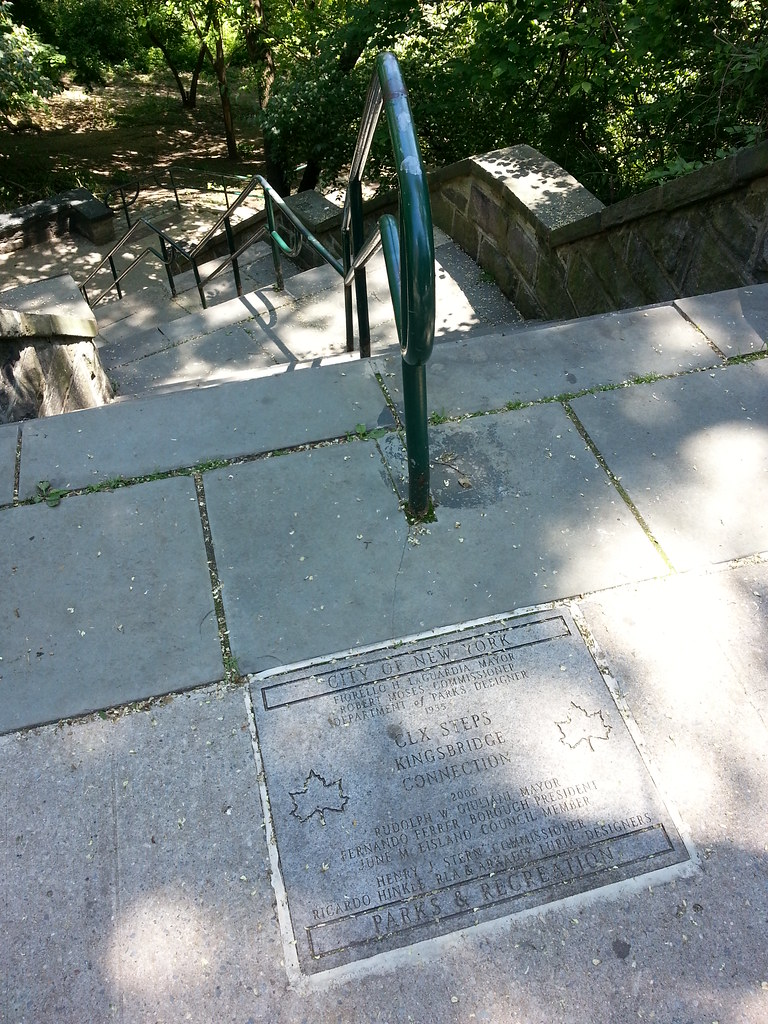
Standing at the bottom of this imposing series of staircases, I decided, just out of curiosity, to count all the steps on the way up. But when I reached the top and saw this plaque, I was perplexed, for I had tallied only CLVIII. What gives?

This is the top half of an artwork we first encountered on a snow-covered day back in February.

Built around 1875, this house seems to be popular with the animals.
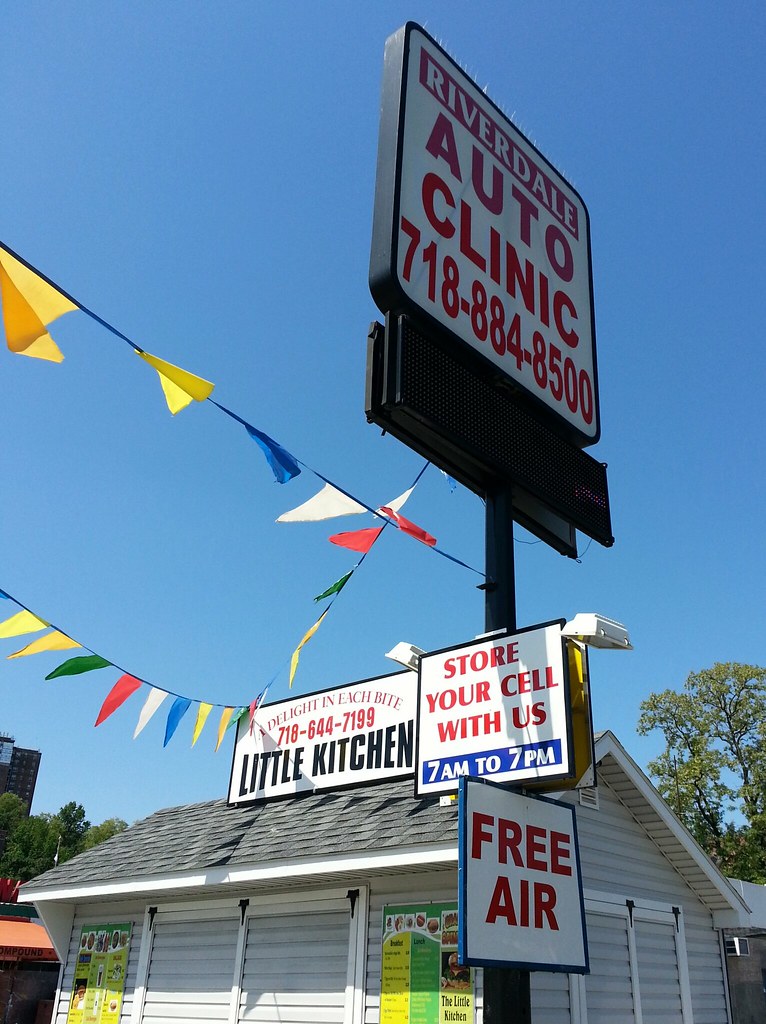
Located across the street from the JFK Educational Campus, these guys are getting in on the device-storage racket.
Gaelic Park, a 2,000-seat stadium that sits in the shadow of the el at Broadway and 240th Street in Riverdale in the Bronx, was always more than just a sports field. It was the place where New York’s Irish went to make connections and to meet potential spouses, to mingle with friends from the old country and to discover new ones.
From the 1920s on, players battled ferociously in the Irish sports of hurling (a combination of baseball, lacrosse and field hockey) and Gaelic football (which blends elements of soccer and rugby) while fans caught up on teams back in Ireland. Amid the alien concrete landscape of America, where streets were filled with strangers, Gaelic Park was a haven.

"All trees receiving compost or mulch must agree to display the official NYC Compost or Mulch tree bed sign".

Sitting outside the Episcopal Church of the Mediator*, a neo-Gothic fieldstone structure designed by Henry Vaughan, one of the architects of the Washington National Cathedral, this defunct fountain is inscribed with a verse from the story of Jesus and the Samaritan woman:
JESUS SAIDAnd while we're on the subject of everlasting life, a sycamore tree that is "considered the oldest living thing in the Bronx" stands just down the block and around the corner on Corlear Avenue. The property adjacent to the tree was owned by the church until fairly recently, but it's now the site of the Sycamore Court Apartments, which were built with an indentation to accommodate the tree and its root system.
THE WATER THAT
I SHALL GIVE HIM
SHALL BE IN HIM
A WELL OF WATER
SPRINGING UP INTO
EVERLASTING LIFE
* You may recognize the dogs featured in the linked picture from one of the links on an earlier post today. They really get around. You can see two more shots of them roaming the church grounds here and here.
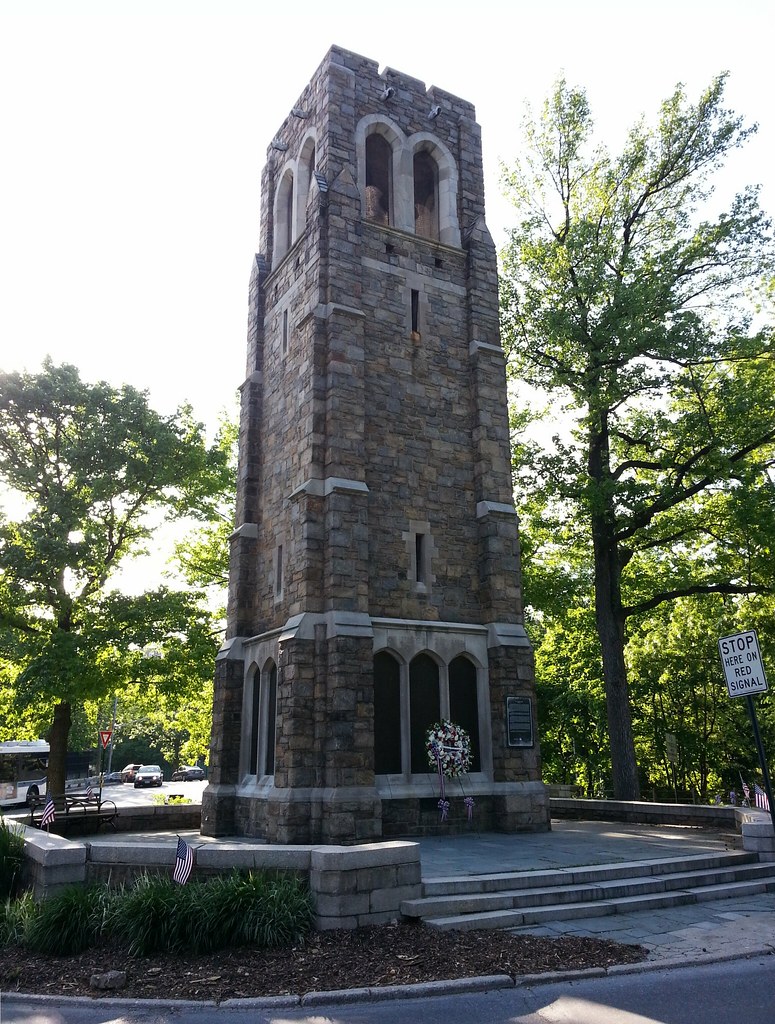
Completed in 1930, this tower was built to house an 18th-century Spanish church bell that "Old Fuss and Feathers" stole from Mexico during the Mexican-American War.

The skeleton of some old light-up sign
UPDATE: It was a police call box sign.

BREAKING NEWS:
"Six decoy ducks have been evicted from Indian Pond for not fitting in with the natural features of Fieldston."

I somehow failed to notice that the tall sweet gum tree at left is growing through a hole in the roof!

"With its main facade rising high above Waldo Avenue, this house is built into a steep slope and has a massive, fieldstone foundation on the southern side. Its complex plan, picturesque roofline consisting of intersecting gables, half-timbered façade, and a circular tower with a conical roof are characteristic of the Tudor Revival style."

"This Colonial Revival style residence was designed by architect Dwight James Baum and built in 1930-31 for owner Dr. Earl Eaton, a local physician, at a time when the Fieldston neighborhood was being developed with homes in a variety of picturesque styles following the strict design guidelines of the Fieldston Property Owners Association. Its pedimented main entryway, multi-pane wood sash, louvered shutters, decorated cornice, and brick end chimneys are all hallmarks of the Colonial Revival style. This house remains remarkably intact."




